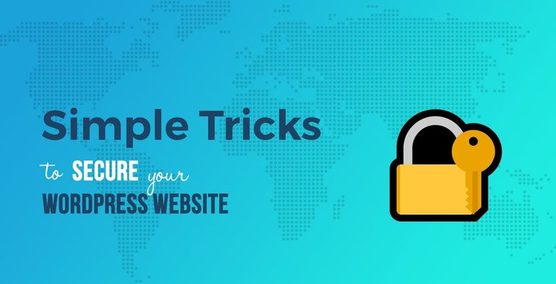
There’s little doubt that WordPress is the king of eCommerce and blogging platforms. The popular content management and website builder claims more than 60 percent of the market share and powers more than one-third of the websites in existence. Unfortunately, that popularity also makes it a prominent target for hackers and trouble makers.
A lot of security actually comes down to the host. Hosting companies are generally split into ones that own their own data centers or rent datacenter space. While the former is much safer the latter can also be good if you vet the company properly. According to Nathan Finch of Aussie Hosting, “more than 1/3 of the hosting companies that we tested had no method for preventing DDos attacks, malware and brute force attacks at the server level”
How bad is the security situation with WordPress? Take a look at some statistics regarding break in attempts and exploits.
WordPress Security Statistics
Nearly everyone is aware of the possibility of data breaches and hacks, but few believe it could happen to them. Despite that fact that cybersecurity spending will increase by 9 percent this year to more than $600 billion overall, small businesses will spend less than $500 on average. This is despite that fact that 99 percent of companies are categorized as SMBs, and they account for more than 43 percent of all cyber attacks.
Where are these attacks originating? According to one security report that’s backed by real-world statistics, these are the most common methods and points of entry:
- Vulnerabilities in hosting platforms (43 percent)
- Vulnerabilities in WP themes (29 percent)
- Vulnerabilities in Wp plugins (22 percent)
- Vulnerabilities in login protocols (8 percent)
Keeping Your WordPress Website Secure
Not prioritizing security can lead to a lot of problems, many of which are avoidable. This include:
- Lost opportunity and productivity while your website is down
- Cost incurred for cleanup and reputation management
- The embarrassment of informing customers and the public about the breach
- Potential blacklisting or diminished ranking by Google
One issue with WP is that it’s an open source platform. While this is good for developers and website owners who need more freedom and flexibility, it also means that there are a lot of unsecured plugins and lack of support from new or inexperienced coders. Fortunately, there are also some very good security plugins that will help protect access points.
In addition to making sure you choose plugins from the official WordPress directory of a reputable developer, there are several preventative measures you can take to prevent brute force attacks, cryptomining, and viruses.
1. Make Changes During WordPress Installation
Robust cybersecurity starts as soon as you install WordPress. One of the first things you should do after installing the software that runs your website is to remove the WP versions number. Hackers know all of the vulnerabilities in the platforms, including specific flaws in various generations. Removing the version number from your URL, directory, and pages will make vulnerability probing that much more difficult. You should also choose a hosting platform that offers SSL/HTTPS.
During configuration, make sure to:
- Change the default admin login
- Limit the number of login attempts before lock down
- Disable PHP file execution, file editing, directory indexing, and XML-RPC
- Change the WP directory prefix to a custom prefix like this: $table_prefix = ‘8uh7zgokm_’;
2. Install Security Enhancements
There are a range of plugins that are specially designed to enhance security. In addition to those, you should make sure that you have a firewall installed and properly configured, use a robust anti-malware and anti-virus software, and use two-factor authentication for logging in.
3. Keep Everything Updated
Your software, firmware and apps are only effective if they’re kept up to date. If your app doesn’t have an auto-update feature, make sure that you can for new solutions daily to keep your anti-malware, virus, and spyware database up to date. Always make sure that you;re using the latest version of WP, and uninstall any unsupported or outdated plugins and themes. Do make sure to install security patches and updates as soon as they’re available.
4. Monitor Your Website – Always
Many reputable hosting services offer website monitoring with premium plans. If yours doesn’t or upgrading your package doesn’t makes sense economically for other reasons, enlist the services of a monitoring service or tool. Make sure that whatever direction your choose, the monitoring is performed 24/7/365.
5. Backup and Backup Again
Backup availability with hosting is hit-or-miss at times. SOme hosting services provide backup and restoration services, some backups only, and some leave you to your own devices, Often, it depends on your plan.
If your hosting platform does offer backups, are they accessible to you? Where are they stored, and can you have the backups if you move to another host? Is website restoration also offered? These are important considerations, but you should also perform regular backups in-house and have a restoration plan in place.
Final Thoughts
Protecting your WordPress website is no different than protecting a homne, physical office space, or warehouse. There are multiple points of entry, and failing to put adequate security measures in place will lead to business disruption and possible financial ruin
Following the above steps will not make your site 100 percent impervious to attack. But it will help you avoid a successful attack and lessen the odds of becoming another cyber crime statistic considerably. Once you’ve done all you can to protect your content and customers, you’ll be free to grow and promote your website.
Original post: 5 Ways to Secure Your WordPress Hosting
